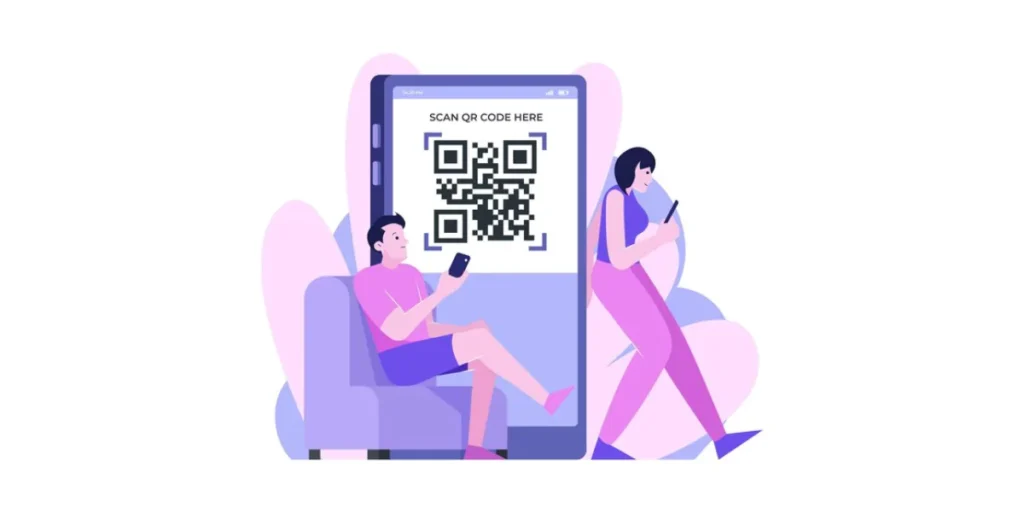In our digitally connected era, QR Codes are more than just a trend. They are a vital link between the physical and digital worlds.
From small startups to large corporations, these codes have become an indispensable tool to engage users.
However, their true potential lies in analysis. Here, we’ll explore the importance of tracking QR Code performance and how Scanova’s QR Code Analyzer transforms these simple codes into powerful marketing tools.
Let’s get started.
A. Understanding QR Codes

QR Codes have evolved significantly since their creation. They were originally invented in Japan in the 1990s for tracking parts in vehicle manufacturing.
Today, they have permeated various industries worldwide. Thanks to their user-friendliness and ease of use.
As of 2023, the QR Code market is estimated to surpass the USD 11.67 billion mark. And this is further expected to grow 4.8 times by 2033. That’s HUGE.
Industries ranging from manufacturing and logistics to education and banking are using QRs for many purposes. The most common among these include business promotions, payments, and customer service solutions.
Generate a QR Code For Your Unique Case
START TODAY!
B. What is a QR Code analyzer?

A QR Code analyzer helps you track your QR Codes’ scans. In fact, it is more than just a tool for counting scans. It’s a comprehensive solution that provides actionable insights into customer behavior and campaign performance.
Print media alone has never been reliably trackable. Historically, it has relied on guestimates. But with a QR analyzer, businesses can accurately monitor the impact of their campaigns. All you need is a QR Code generator that does more than just produce a scannable image.
It should be able to track scans based on:
1. Geographic locations of the scans
2. Precise timings
3. Exact GPS coordinates
4. Types of devices and browsers used by the end users
Such granular details enable businesses to paint a comprehensive picture of their audience.
By understanding where, when, and how customers interact with their QR codes, they can infer valuable insights about consumer behavior.
This data becomes the cornerstone for shaping future marketing strategies, tailoring campaigns to specific audience segments, and enhancing overall customer engagement.
For example, say you put out posters in five cities in the USA to get people to visit your online store. Assume that the scanning data shows that out of the five cities, three cities contributed over 90% of scans while the rest of the two had minimal response.
Here, when you plan similar campaigns in the future, you’ll know which locations are likely to perform the best. Hence, you’ll be able to allocate your resources accordingly.
C. Why choose Scanova for QR Code analysis?

Scanova stands out in the QR Code Analyzer market for its robust features and user-friendly interface. This is not something we claim, but what our users say.

In addition to scan tracking and reporting, users can also export the data in Excel, PDF, PNG formats, and more.
Also, with Scanova, users get a unique tracking metric—event tracking and analytics.
It takes you a step beyond the usual QR Code scan tracking. With it, you can also see how your audience engages with the QR Code’s content after scanning it.
Here’s an example to help you understand it better. Say you create a QR Code with multiple web links. These could be links that take people to different pages on your website.
You launch this campaign and a week later gather the scan data. You get detailed numbers on scan location, time, devices used, etc.
In addition, you also get to see exactly how many people clicked on each of the weblinks (added as buttons).
This data will help you not only make better decisions but also optimize the user-experience for your campaigns.
D. How do I use a QR Code analyzer?

This section will give you a snapshot of how exactly the tracking and analytics work.
Using Scanova’s analyzer, given below are the exact steps one needs to follow. However, note that these steps shall remain more or less the same across different operators.
1. Create an account with Scanova and generate a QR Code of your choice
2. Go to the ‘Analytics’ section on the left
3. Here, you’ll be able to customize the tracking report as per your needs. You can:
- Select the QR Code(s) you need to see the numbers for
- Customize the time period
After you’re done, hit the ‘Get Analytics’ button and the data will be on its way
You’ll then be able to see scans by date, day, and time. In addition, there will also be data based on:
- Geography
- GPS location
- Age
- Type of devices
- Operating systems
- Browsers
- Handsets
- Event tracking details
- Engagement statistics
You will also see the option to export this data in PDF, PNG, XLS, and XLS formats.
Generate a QR Code For Your Unique Case
START TODAY!
F. Best practices for QR Code analysis

When considering best practices for a QR Code Analyzer, it’s important to focus on both the technical capabilities of the tool and the ways in which it is used. Here are some key best practices:
1. Accurate and real-time data tracking
The analyzer should provide real-time data on scans, including time, location, and frequency. Accuracy is paramount for reliable analytics.
2. Detailed demographic insights
The service provider must offer insights into the demographic profile of users who scan the QRs, such as age, browser, and device type. This helps tailor marketing strategies to target audiences effectively.
3. Geolocation tracking
Understanding where QR Codes are being scanned can provide valuable geographical insights to target specific regions or tailor the campaign based on location.
4. Integration with other analytics tools
The QR Code Analyzer should seamlessly integrate with other analytics platforms (like Google Analytics) for a comprehensive view of marketing performance.
5. User privacy compliance
The tool must comply with global data protection and privacy laws, such as GDPR, ISO 27001:2023, and SOC2. These help make sure that your data is in safe hands.
6. Customizable dashboards and reports
Tools should allow customization of dashboards to focus on the metrics that matter most.
7. Device and browser analysis
Understanding which devices and browsers are used to scan the QR Codes can help optimize the content for a better user experience.
8. Ease of use and user interface
A user-friendly interface ensures that users can easily navigate and utilize the tool’s full range of features.
9. Scalability and reliability
The tool should be reliable and scalable to handle varying volumes of scans and data without compromising performance.
12. Multi-channel tracking
It should track QR Codes across different channels, whether printed media, online platforms, or outdoor advertising, to understand the omnichannel impact.
13. Campaign management features
The ability to manage and track multiple QR Code campaigns simultaneously, comparing and analyzing their performance.
By adhering to these best practices, a QR Code Analyzer can provide businesses with deep insights into their marketing campaigns and customer behaviors, ultimately aiding in more informed decision-making and strategy development.
G. Conclusion
To conclude, the QR code analyzer is an important supplement for your marketing game. It plays a vital role in helping you make informed decisions for success.
Just make sure the tool you go with offers the features that take you deep into audience analytics and user behavior. Once you do that, you’ll not only be able to optimize your ongoing campaigns but also plan better ones in the future.
